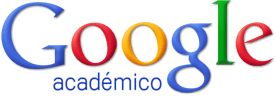Submissions
Submission Preparation Checklist
As part of the submission process, authors are required to check off their submission's compliance with all of the following items, and submissions may be returned to authors that do not adhere to these guidelines.- The text is single spaced; 12 points of font size; italics are used instead of underlining (except in URLs); and all the illustrations, figures and tables are located in the appropriate places of the text, instead of at the end.
- The submission has not been previously published nor has it been submitted for consideration by any other journal (or an explanation has been provided in the Editor's Comments).
- Submitted file is in OpenOffice, Microsoft Word, RTF or WordPerfect format.
- Whenever possible, URLs are provided for references.
- The text respects the style and bibliographic characteristics expressed in the Author Guidelines/a in the About the Journal section.
Privacy Statement
Los nombres y las direcciones de correo electrónico introducidos en esta revista se usarán exclusivamente para los fines establecidos en ella y no se proporcionarán a terceros o para su uso con otros fines.










